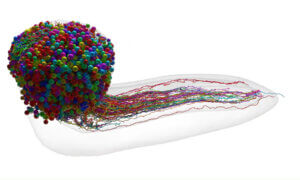Around 250,000 people in the U.S. undergo surgical treatment annually for keloids, a type of firm, overgrown scars and other serious burn scars. Some can be hidden by plastic surgeons, others can leave a person traumatized for life. Scientists from The University of Western Australia, Fiona Wood Foundation and Royal Perth Hospital Burns Unit, together with Pharmaxis Ltd., intend to remove the problem altogether by stopping scars from forming in the first place #todaymagic
They found that an enzyme is responsible for the disruption in skin architecture. Lysyl oxidase, or LOX, enables the collagen to crosslink, leading to scar formation. What needs to be done is stop scars from developing by inhibiting LOX, Swaminathan Iyer, Ph.D and fellow researchers believe. They are now working with compounds that have this effect: “during the scarring process, the normal architecture is never restored, leaving the new tissue functionally compromised. So our goal is to stop the scar from the beginning by inhibiting LOX. We have been fortunate to work in collaboration with the pharmaceutical company Pharmaxis, which is designing novel and highly selective small molecules that will allow the establishment of normal tissue architecture after wound repair.”
In their first study, the team observed real changes when they added LOX inhibitors to cultures from patients with Dupuytren’s, keloids and other scar tissue. That is truly remarkable, at least in theory; in practice, we’ll have to see how the body responds to this solution, after is being tested on animals. The team is now attending a presentation at American Chemical Society to discuss their finding.
Follow TechTheLead on Google News to get the news first.























